
Allan Ramsay was a prominent Scottish portrait-painter.
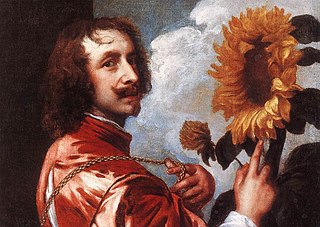
Sir Anthony van Dyck was a Flemish Baroque artist who became the leading court painter in England after success in the Spanish Netherlands and Italy.

The Alte Pinakothek is an art museum located in the Kunstareal area in Munich, Germany. It is one of the oldest galleries in the world and houses a significant collection of Old Master paintings. The name Alte (Old) Pinakothek refers to the time period covered by the collection—from the fourteenth to the eighteenth century. The Neue Pinakothek, re-built in 1981, covers nineteenth-century art, and Pinakothek der Moderne, opened in 2002, exhibits modern art. All three galleries are part of the Bavarian State Painting Collections, an organization of the Free state of Bavaria.
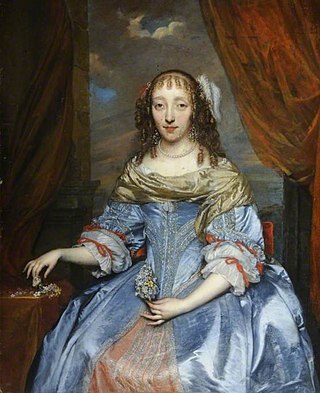
Gonzales Coques was a Flemish painter of portraits and history paintings. Because of his artistic proximity to and emulation with Anthony van Dyck he received the nickname de kleine van Dyck. Coques also worked as an art dealer.
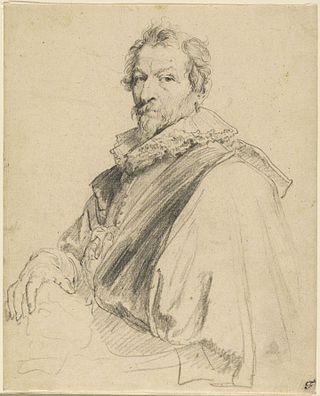
Hendrick van Balen or Hendrick van Balen I was a Flemish Baroque painter and stained glass designer. Hendrick van Balen specialised in small cabinet pictures often painted on a copper support. His favourite themes were mythological and allegorical scenes and, to a lesser extent, religious subjects. The artist played an important role in the renewal of Flemish painting in the early 17th century and was one of the teachers of Anthony van Dyck.

Jan Boeckhorst or Johann Bockhorst was a German-born Flemish Baroque painter and draughtsman. He was a versatile artist who produced history paintings, genre scenes and portraits in a style influenced by the trio of leading Baroque painters in Antwerp Peter Paul Rubens, Anthony van Dyck and Jacob Jordaens. Boeckhorst also worked as a designer of cartoons for tapestries.

Sir Peter Paul Rubens was a Flemish artist and diplomat from the Duchy of Brabant in the Southern Netherlands. He is considered the most influential artist of the Flemish Baroque tradition. Rubens's highly charged compositions reference erudite aspects of classical and Christian history. His unique and immensely popular Baroque style emphasized movement, colour, and sensuality, which followed the immediate, dramatic artistic style promoted in the Counter-Reformation. Rubens was a painter producing altarpieces, portraits, landscapes, and history paintings of mythological and allegorical subjects. He was also a prolific designer of cartoons for the Flemish tapestry workshops and of frontispieces for the publishers in Antwerp.

Philip Jonathan Clifford Mould is an English art dealer, London gallery owner, art historian, writer and broadcaster. He has made a number of major art discoveries, including works of Thomas Gainsborough, Anthony Van Dyck and Thomas Lawrence.
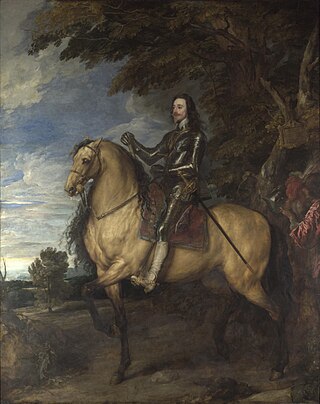
The Equestrian Portrait of Charles I is a large oil painting on canvas by Anthony van Dyck, showing Charles I on horseback. Charles I had become King of England, Scotland and Ireland in 1625 on the death of his father James I, and Van Dyck became Charles's Principal Painter in Ordinary in 1632.

Fake or Fortune? is a BBC One documentary television series which examines the provenance and attribution of notable artworks. Since the first series aired in 2011, Fake or Fortune? has drawn audiences of up to 5 million viewers in the UK, the highest for an arts show in that country.

Charles I with M. de St Antoine is an oil painting on canvas by the Flemish painter Anthony van Dyck, depicting Charles I on horseback, accompanied by his riding master, Pierre Antoine Bourdon, Seigneur de St Antoine.

Cosmo Alexander was a Scottish portrait painter. A supporter of James Edward Stuart's claim to the English and Scottish thrones, Alexander spent much of his life overseas following the defeat of the Jacobite cause in 1745.

Magistrate of Brussels is an unfinished oil painting or oil sketch by Anthony van Dyck, rediscovered in 2013 after being shown on episodes of the BBC television programme Antiques Roadshow.

The "lost portrait" of Charles Edward Stuart is a portrait, painted in late autumn 1745 by Scottish artist Allan Ramsay, of Charles Edward Stuart, also known as the Young Pretender or Bonnie Prince Charlie.

Self-Portrait with a Sunflower is a self-portrait by Anthony van Dyck, a Flemish Baroque artist from Antwerp, Spanish Netherlands. The oil on canvas is thought to have been painted between the years 1632 and 1633. Produced at the height of his fame, Anthony van Dyck served as "principal Paynter in order to their Majesties" in the court of Charles I of England whilst working on this self-portrait. The symbolism behind the sunflower and gold chain have been a point of contention amongst various art historians. His successful ventures in the southern part of the Netherlands and Italy propelled him into a career as court painter and made him a favourite of King Charles I and his court. Van Dyck's devotion for capturing the likeness of his models gave him authority over the world of portraiture long after his death in 1641. With such a long and storied career in art, his portrait technique evolved into what is referred to as his Late English period as seen in Self-Portrait with a Sunflower. This work is now in the private collection of the Duke of Westminster, housed at Eaton Hall in Cheshire.
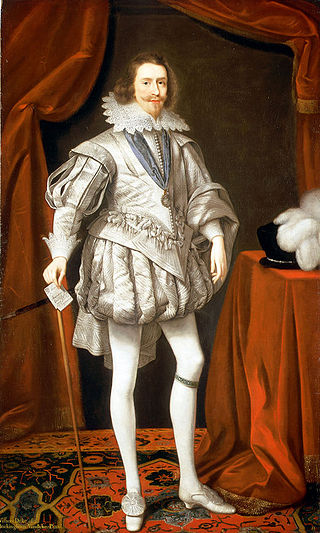
George Villiers, 1st Duke of Buckingham commissioned works of art to enhance his personal image, as a means to aid his political career and advancement at court.

Simon Rollo Gillespie is a British conservator-restorer of fine art, and an art historian. He is known particularly for his work with Early British and Tudor portraits, although his practice extends across all periods from early paintings to contemporary artworks. Gillespie has been restoring art since 1978, and he appears frequently on the BBC Four series Britain's Lost Masterpieces, having previously appeared on the BBC1 art programme Fake or Fortune.

The "lost portrait" of George Villiers, 1st Duke of Buckingham is a portrait of English courtier George Villiers, 1st Duke of Buckingham. It was painted around 1625 by Flemish artist Peter Paul Rubens.
Britain's Lost Masterpieces is a factual BBC Four documentary television series that aims to uncover overlooked art treasures in British public collections, in conjunction with Art UK. It is presented by Bendor Grosvenor, along with art historian Jacky Klein and Emma Dabiri. The series also features the art restoration work of Simon Gillespie. In North American syndication, the series is called The Art Detectives.
Duncan Thomson is a former director of the Scottish National Portrait Gallery and an authority on the art of Allan Ramsay.


















